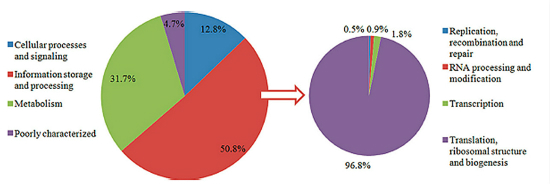IAS Identified Differentially Expressed Genes Associated With Litter Size in the Jining Grey Goat
The mutton sheep and goat genetics and breeding team led by Professor Mingxing Chu in Institute of Animal Science of CAAS, reported that differentially expressed genes were identified in the Jining Grey goat that are associated with litter size. This study provides insights into the mechanistic basis by which the caprine hypothalamic-pituitary-gonadal axis affects reproductive traits. The result of this study was published in Molecular Reproduction and Development on December 3, 2014.
Litter size is a favorable economic trait for the goat industry, but remains a complex trait controlled by multiple genes in multiple organs. Several genes have been identified that may affect embryo survival, follicular development, and the health of fetuses during pregnancy. Jining Grey goats demonstrate the largest litter size among indigenous goat breeds in China.
In order to better understand the genetic basis of this trait, six suppression subtractive hybridization (SSH) cDNA libraries were constructed using pooled mRNAs from hypothalamuses, pituitaries, and ovaries of sexually mature and adult polytocous Jining Grey goats, as testers, versus the pooled corresponding mRNAs of monotocous Liaoning Cashmere goats, as drivers. A total of 1,458 true-positive clones were obtained from the SSH libraries by sequencing and alignment. The known genes were categorized into cellular processes and signaling, information storage and processing, and metabolism. Several other identified genes may affect embryo survival, follicular development, and health during pregnancy. This study can provide a theoretical basis for goat production and breeding.

By Liu Qiuyue
qiuyue1983921@163.com